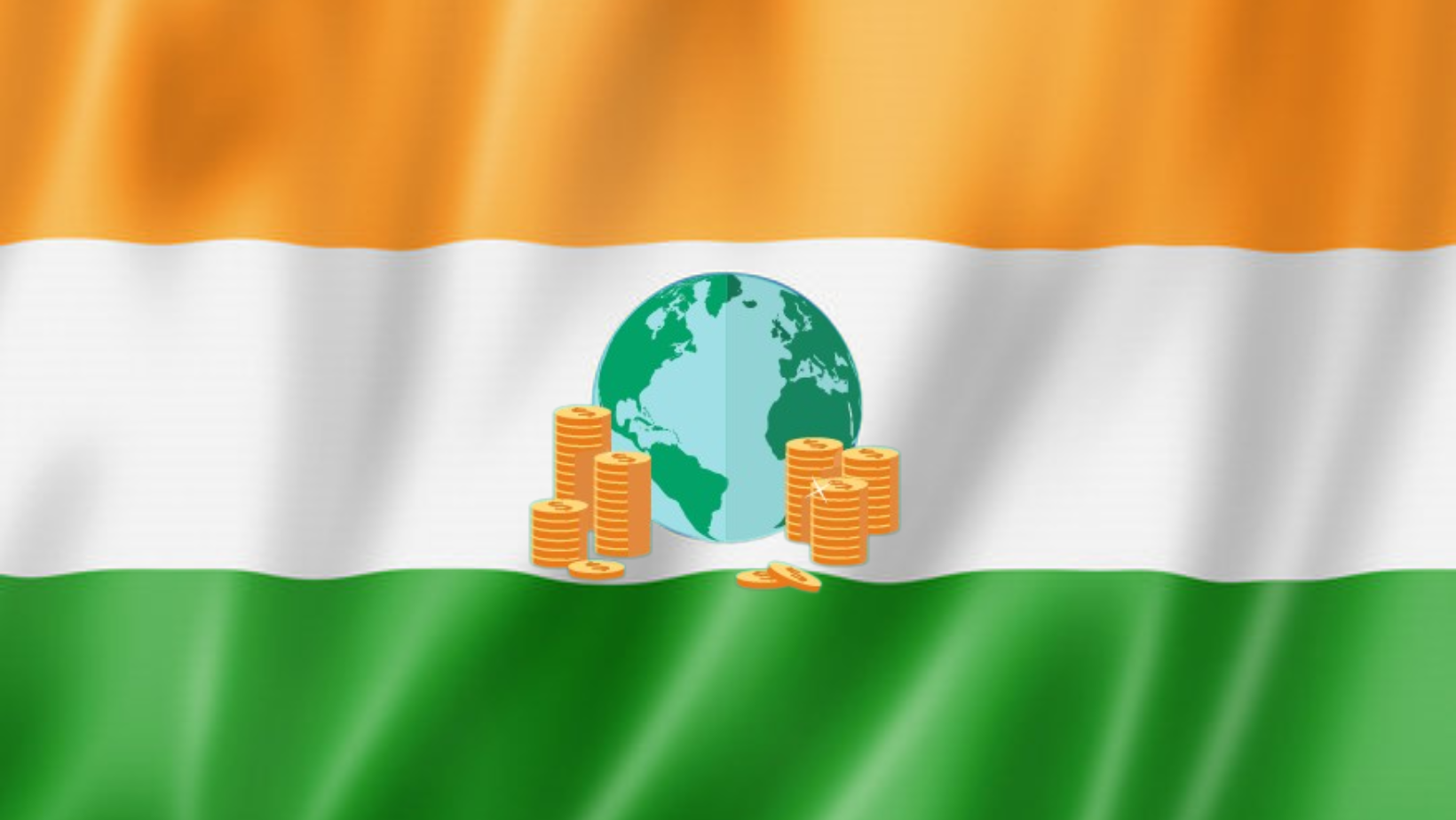India: an emerging market or a modern high growth economy?

According to United Nations' (UN) calculations, India in April 2023 surpassed China's population for the first time after at least 73 consecutive years of China's dominance (UN started officially calculating countries' population in 1950). In numbers, India's population is estimated to be over 1.425 billion citizens, while China's population has shrunk from 1.426 billion people in 2022 to under 1.425 billion currently.
"India will be a global player in the digital economy" - Sunder Pichai, CEO of Google.
Due to the above record breaking, the country's Fiscal Year End on March 31 and the recent talk around what is the position of India in the global economy, I am writing this article to furtherly examine the potential of the enormous Asian country.
India vs China
Despite India's rapid fertility rate of 2.0 births per woman, the economy as a whole is still far enough from reaching its Asian competitor's power. To be exact, in the most recent (2021) World Bank ranking by Gross Domestic Product (GDP), China stands second only to the USA with 17.734 trillion $ GDP, when on the other hand India was listed fifth with a GDP of 3.176 trillion $. In 2021 even far less populous countries such as Germany and Japan listed higher than India. Of course that doesn't mean that India lacks the potential to outperform the other countries in the future. As of that it is important to notice the example of China, which managed to change from a slow growth economy before 2010 (GDP - 6.087 tr. $) to an economic giant that almost tripled its GDP in less than 13 years.
Another metric that shows that India has a lot of ground to cover to reach China's economy is the GDP per capita. This is a measurement of general prosperity and economic wealth and it is calculated by dividing GDP by the population. China's GDP per capita stands at 12,556$, far away from India's 2,256$, which is even lower than Bangladesh's 2,457$.
India's main sectors
India's economy is divided into three main categories: Agriculture, Industry and Services representing the primary, secondary and tertiary sectors.
1) Agriculture: India ranks second (once again behind China) in global food and agricultural production, reaching 35.04 billion $ exports in agricultural products in 2016. Its main products are: milk (1st producer in the world), rice (2nd), wheat (2nd), sugarcane (2nd), cotton (2nd), silk (2nd) and cashew kernels (1st). Additionally, India has the second largest amount of arable land, behind USA, at approximately 1,530,000 square killometers. In 1950 the Agriculture sector contributed 51.81% to the country's GDP, a percentage which decreased dramatically to just 16.38% in 2011 and furtherly to 15.4% in 2017 (CIA Fackbook).
2) Industry: After the collapse of the Soviet Union in 1991, which was India's main trading partner, governments took loans from the International Monetary Fund (IMF) and followed liberal economic policies. This political transision freed India's global trading and created new exports potential. Cheap labor along with technological advancements led the country to become a globally major producer in: coal (2nd), cement (2nd), steel (2nd), electricity (3rd). Manufacturing also grew rapidly in the region and sectors such as Defense (3rd largest military force in the globe), Engineering (4th largest automobile production), Infrastructure (2nd largest road network) and Pharmaseuticals (largest generic drugs manufacturer) keep leading the way. In 1950 Industry accounted for 14.16% of GDP, increasing to 29.34% in 2011 and then decreasing to 23% in 2017 (CIA Fackbook).
3) Services: Services is currently by far the biggest GDP contributor in the country. It's the seventh largest servises provider by GDP in the world and third largest considering the purchasing power (PP). India has the 4th largest Civil Aviation market, more than 400 fintech companies, 227 billion $ of IT services exports, 25 million workforce in retail services and more than 41.5 million annual jobs related to tourism. In addition, a combination of low wages, well-educated and english-speaking workforce and the advancement of the internet boosted India's revenues by IT outsourcing. For many years India holds the leading position in IT outsourcing services, which is projected to reach 7.81 billion $ in 2023 and holds more than 40% of the global offshore outsourcing market. In 1950 Services contribution to GDP stood at 33.25% and by then rose to 54.27% in 2011 and furtherly to 61.5% in 2017 (CIA Fackbook).
As the numbers above suggest there is a trend for a transformation to a more services heavy economy. These types of economies are usually present in modern western countries such as USA, Germany, Canada, Switzerland, Belgium and Luxembourg and clearly that's a sign that India is working in that direction, but that alone is not enough to become a developed economy.

BRICS - G7
BRIC is the acronym for Brazil, Russia, India, China that wanted to represent the leading economies in the so called emerging markets but that is not anymore the case. By 2009 BRIC has become an intergovernmental organization that hosts annual meetings and in 2010 got renamed to BRICS after South Africa joined in.
On the other hand G7 (formerly G8) stands for Group of Seven and is an international intergovernmental forum consisted of USA, Germany, France, Japan, United Kingdom, Canada and Italy. EU is also an unnumbered member of the group and Russia was a member before violating Ukraine's territory and the annexation of Crimea in 2014, thus formerly named G8.
On the surface, G7 represent the modern developed economies as known in the modern "western" standards, while BRICS represent high growth developing countries in emerging markets.
The paradox here is that despite G7's modern high status and heavy influence, BRICS surpassed them in global GDP contribution accounting for 31.5%, while G7 falled to 30% of the total GDP.
What about India today? - Fiscal Year End
India is still growing financially and has managed to do well in a post COVID-19 unstable economic environment. According to Asian Development Bank (ADB) the economy grew by 6.8% in FY 2022 and is projected to furtherly do so in FY 2023 with an estimated rate of 6.4%.
Inflation was relatively high in the region due to the global financial instability and the Russia-Ukraine war, reaching 6.7% year-over-year, but ADB expects it to slow down back to 5% in the next year.
The bad news for India is that the unemployment rate climbed at 8.11% in April 2023 from 7.8% in March the same year.

Apple's market share - a sign of prosperity
During the past month Apple's CEO Tim Cook visited India in order to open the first official physical Apple store in the country. This arrival brought excitement to the public and a warming welcome to the successful American executive. That became clear as India's Prime Minister Narendra Modi also found some time to meet with him and have a conversation.
As it is reasonable, Apple sees the highly populous country as one of its main targets for market share growth. Despite economic hardships and the general fall of the smartphone market in India amid an uncertain economic future, Apple achieved to increase its sales and gain further market share.
The bottom line
India recently became the most populous country in the world and that will surely affect its economic performance. Despite the post COVID-19 era, the war between Russia and Ukraine and the global financial instability, India continues to expand its economy. Global trade agreements either in the frame of BRICS or globally as the physical establishment of Apple stores suggest that India gains more and more ground on becoming a modern developed economy. As it has happened before, India follows China's example of high growth and hopes to become the new world super-power. To achieve that though, governments should also take care of issues in politics, justice, public health and public education rather than solely in economy. One thing is for sure, the largest country by population on earth is here to stay!



References:
https://tradingeconomics.com/india/unemployment-rate
https://www.cmie.com/kommon/bin/sr.php?kall=warticle&dt=20230501182648&msec=936
https://www.adb.org/outlook
https://www.silkroadbriefing.com/news/2023/03/27/the-brics-has-overtaken-the-g7-in-global-gdp/
https://edition.cnn.com/2023/04/29/business/india-economy-global-businesses-investment-intl-hnk/index.html
https://www.bbc.com/news/business-65491090




Comments ()